

The travel industry pioneers – Hotwire, Priceline, Travelocity, TripAdvisor – are SEO juggernauts.
With a massive amount of searches for vacation and travel planning, it’s one of the top categories online.
And there’s a lot of money in SEO for them.
In fact, organic traffic is the #1 source of traffic for travel brands:

Just a few position increases for their strategic portfolio of keywords can mean millions of dollars in revenue.
So it’s fair to say they hire the best and the brightest of SEO talent to keep their traffic flowing.
Knowing this, we can look to these sites for guidance for what’s still working in SEO today.
And the results are surprising.
They are still employing some traditional SEO practices that apparently are still working.
Practices like text on the homepage; a bevy of internal links; and landing pages built for keywords.
We’re going to look at what they’re doing – and we’re focusing on some basic principles that anyone can apply, not just companies with multi-million dollar SEO budgets.
1. Home Page Text
In my opinion, text content on the home page is one of the most overlooked SEO tactics.
I mean, it’s been around forever, but plenty of sites ignore the home page and just use it as a pretty portal page.
If you’re a paid-ads focused brand, or in the fashion industry – I get it.
But for most sites that prioritize organic search, not enough are doing it.
Hotwire takes advantage of the power of their home page’s link equity, and juices it up with keyword-rich text:
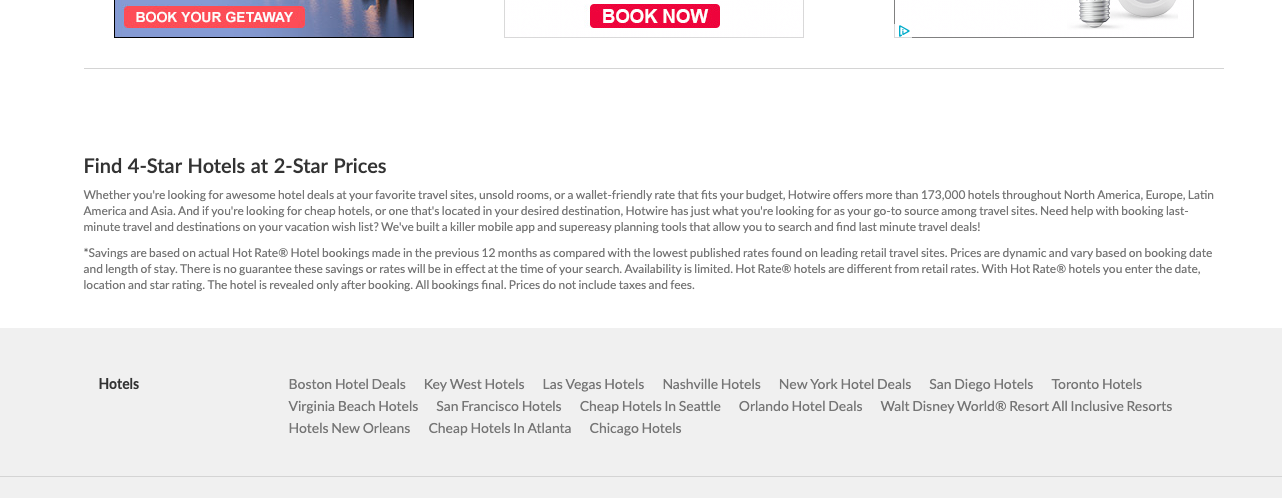
Because of employing this tactic, it helps them rank on page one for keywords like “travel sites” and “hotel sites”.
Could you leverage this tactic for your website?
2. Home Page Internal Links
For most websites, the home page will be the single most-linked-to page on the site.
So with all of this link equity on the home page, are you helping it flow to your most important commercial pages?
Likely not.
Most websites – large and small – do have their most important pages in their main navigation, but they’re likely missing out on linking to some key pages because of limited space.
Travelocity has one of the most extensive home page internal link structures I’ve found in my research.
It’s quite aggressive:

You can certainly bet that they’ve hand-selected these bases on either pages that needed the biggest link boost, the most popular pages, or sections that need to earn more revenue.
Your action item: go to your home page now and see if it’s worth adding some internal links to key pages on your site.
3. Internal Links in Footer
There are mixed messages given by commentators in the SEO industry about how optimized and ambitious you can get with footer links.
Some say they’re a good way to ensure your key pages are linked to and crawled.
Others fear that the links are either devalued, completely ignored by Google, or can send unwanted signals.
Hotels.com has no fear and goes straight for it with exact match anchor text:

Should you do the same on your site?
It depends on the size of your site.
Typically, huge sites with lots of link equity can have massive footers linking internally and still do well.
Smaller sites would be better off adding a few links for crawlability and visibility, but you’re better off linking contextually.
4. Text on Every Important Page
Do these huge travel sites even have the ability to hand-write content for every page on their site?
It seems like a Sisyphean task – there are just too many pages.
Nevertheless, on critical pages that are extra valuable, yes these brands will custom-craft content to rank higher. On less important pages, database-generated content will fill in the gaps.
Kayak has taken the time to create text and faqs on their U.S. to Ireland flights page:
Official Google Ads Templates
Select your industry. Download your campaign template. Custom built with exact match keywords and converting ad copy with high clickthrough rates.
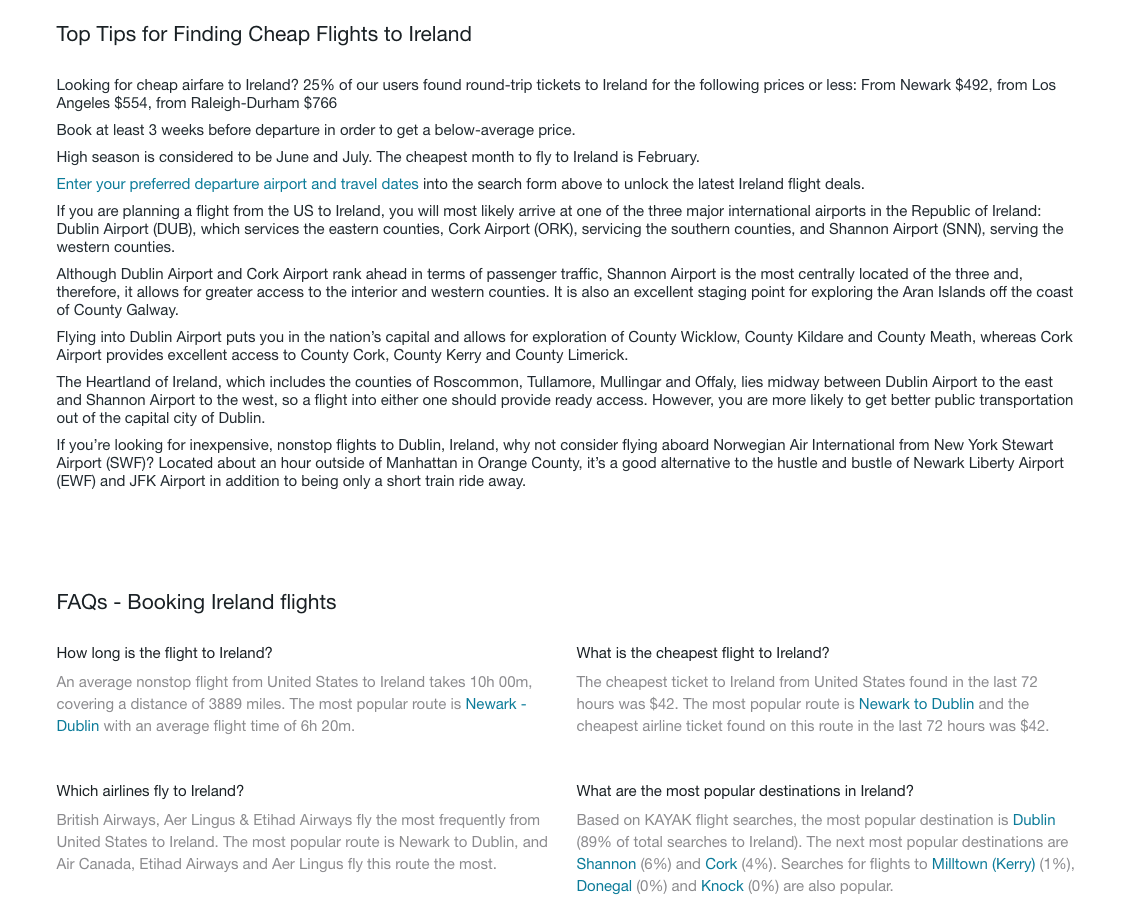
Perhaps they’ve been feeling the heat from Google Flights?
They’ve continued to march upward in traffic, so perhaps they’re onto something:
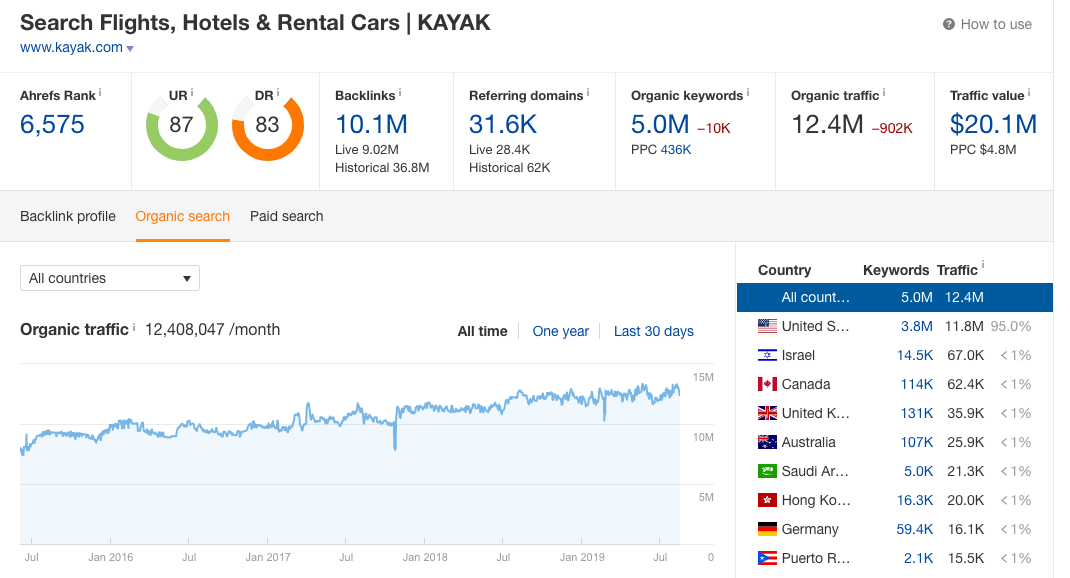
The takeaway for you?
If these sites with hundreds of thousands of pages can find a way to get keyword-rich content on their critical pages, you can too.
5. Landing Pages Built just for Organic Keywords
This strategy works oh-so-well. Perfectly pair up keywords with landing pages and scale it up.
This is SEO 101, but what makes companies like Enterprise experts as this is the pure volume of pages required to create and manage.
They nail it in this example and rank #1 for their Boston page:
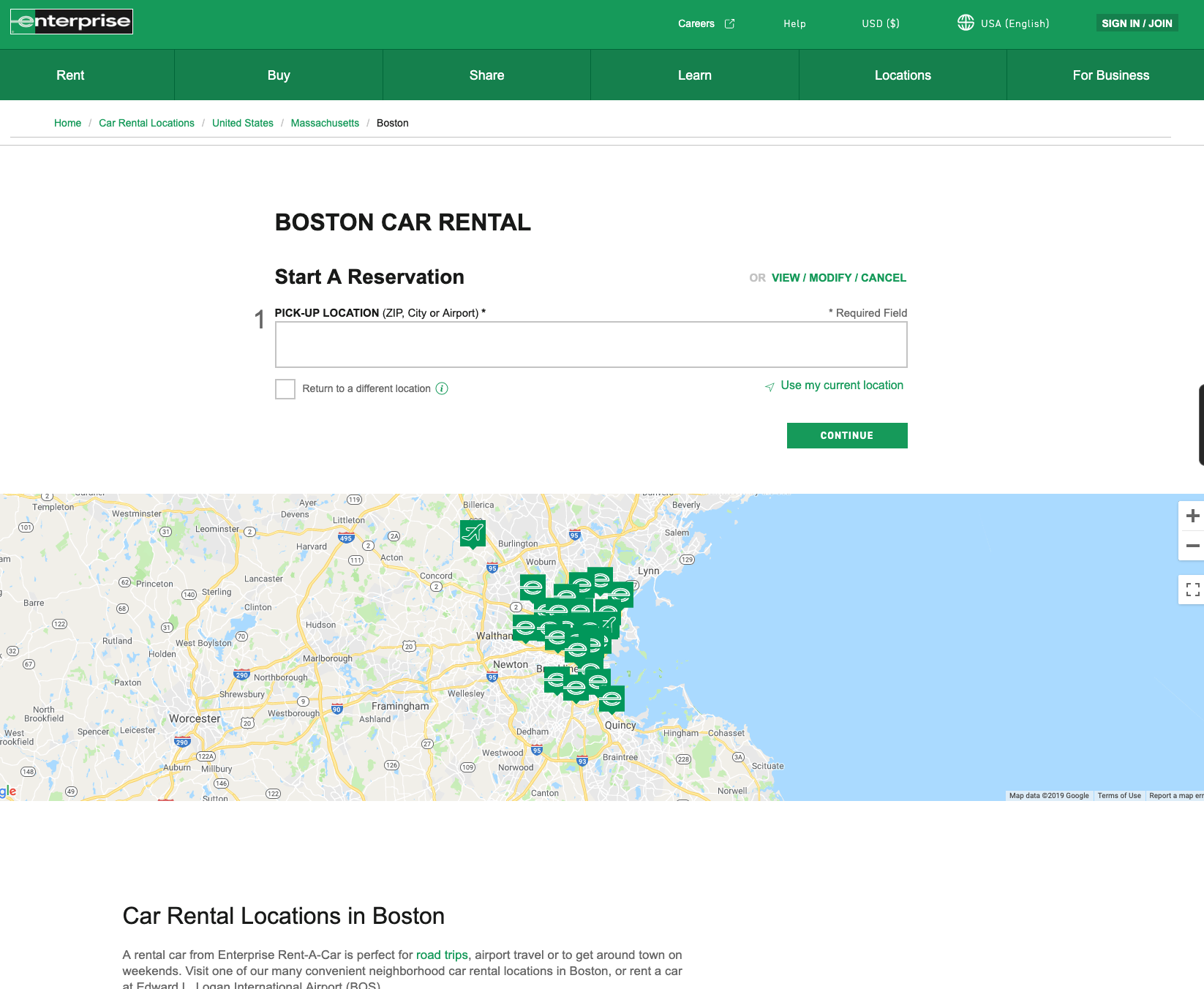
This works beautifully for them, and they have 7,000+ pages just like this, driving over 1.7 million in organic traffic visits a month:

Creating a huge amount of landing pages for SEO is typically reserved for large brands.
But those of us running smaller sites can remember the importance of matching keywords to landing pages that serve the user intent.
Even a dozen service or product pages can deliver targeted organic traffic for smaller sites.
6. Click-Worthy Title Tags
I love title tags – they’re so basic, but so controllable and powerful at the same time.
They’re one of the best elements to A/B test for SEO because you can experiment with a large swath of them at once.
If you believe in click-through rates impacting rankings, then that’s even more of a reason to optimize these to the fullest.
Googling “hotels in paris” we see all of these brands have pretty well-optimized title tags:
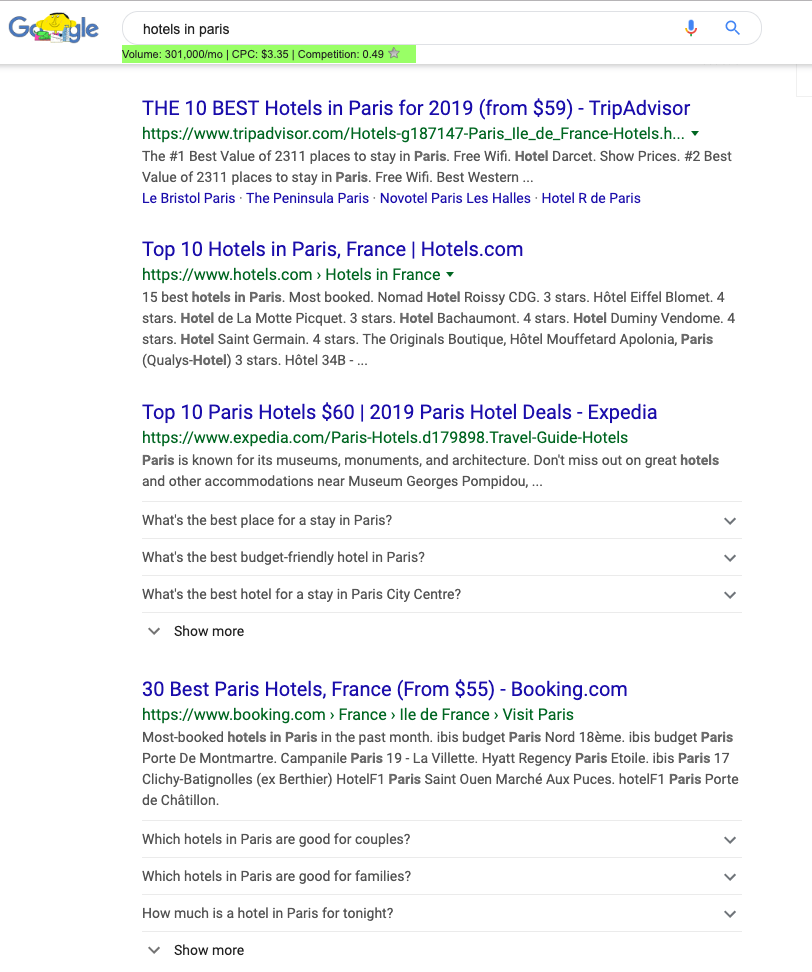
I mean, while searching for hotels, would you ever not want the best? Don’t you want the cheapest and best?
Yes – and likely these brands are constantly experimenting with new variations to stand out.
What should you do? Don’t overlook the persistent favorite of SEO professionals everywhere: the humble title tag.
Always be testing and trying to push the CTR higher and higher.
7. Exact-Match Domains
This is a hard one to determine the impact. Google has clearly rollbacked the impact of exact-match and partial-match domains in recent years.
But they do still have some positive signals, if not used in a spammy way.
The proof is in the pudding:
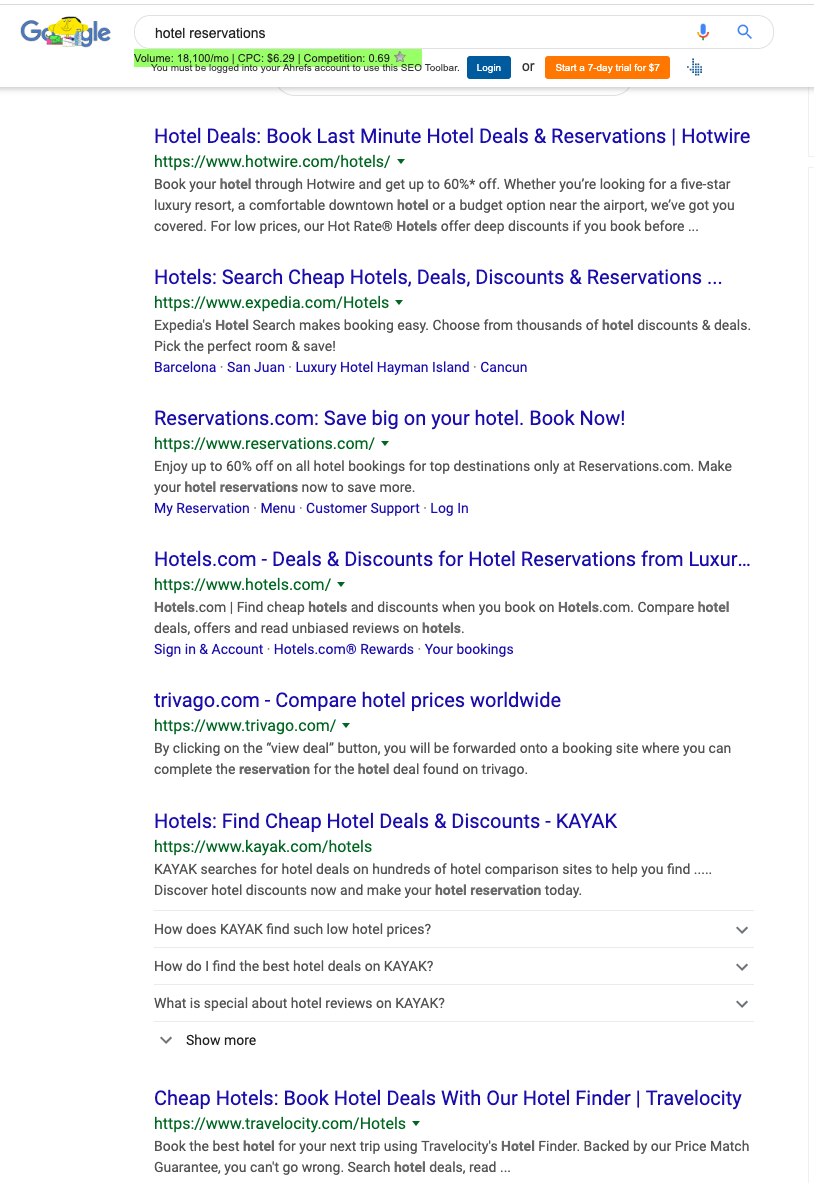
Despite have weaker metrics than its competitors, Reservations.com is ranking #3 for “hotel reservations” (as of this writing) – a hugely competitive keyword. (Disclosure: Reservations.com is a client.)
We see a similar result with CarRentals.com ranking well for “car rentals”, despite having weaker overall domain rating and link metrics:
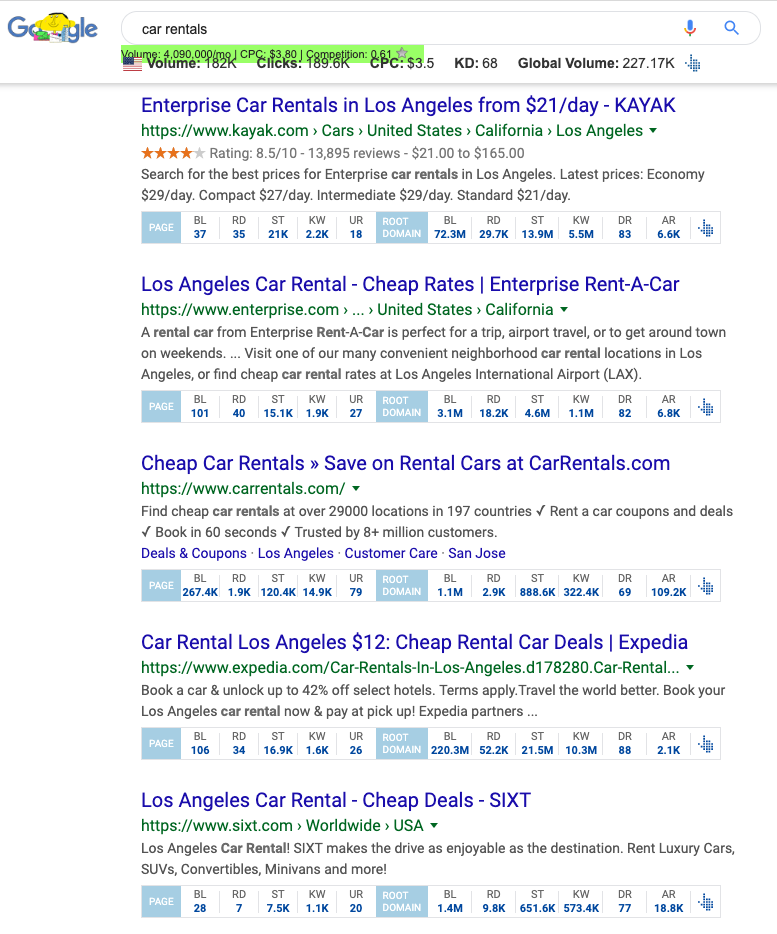
What can you do with this information?
Well, it may be too late if you already have a website, but if you’re building a new one, don’t overlook the impact of an exact-match or partial-match domain.
Take Action
So how does this information help your website – that may be a much smaller site or in a different industry?
It proves that even the largest sites in the world are not too strong to ignore SEO basics.
With over $1.6 trillion in global travel on the line, these top players have sophisticated teams competing on every front to earn all the traffic they can.
At the end of their day, their biggest competitor is Google itself.
[“source=searchenginejournal”]

